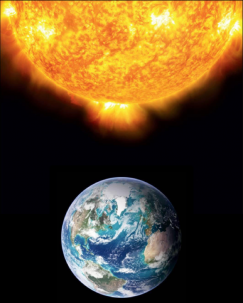Debunking the Solar-Cycle/North Atlantic Winter Weather Connection
The North Atlantic Oscillation is a key driver of winter weather patterns over the northern hemisphere. In recent years, research has claimed a correlation between the NAO and the 11-year solar cycle. A new paper debunks that claim.
The North Atlantic Oscillation (NAO) is considered a key driver of winter weather patterns over the northern hemisphere. A positive NAO is linked with more windstorms, and mild and wet winters in Europe. A negative NAO indicates snowy and cold winters in Europe. In recent years, published research has claimed the existence of a correlation between the NAO and the 11-year solar cycle, a periodic change in the sun’s activity. That theory has held that the connection between the NAO and the solar cycle is strong enough to inform predictions of the NAO as much as a decade in advance, which would in turn, enable scientists to predict winter weather patterns as many as ten years in advance. However, in a research paper published in Nature Geoscience Monday, Gabriel Chiodo, Jessica Oehrlein and Lorenzo Polvani, scientists at Lamont-Doherty Earth Observatory and the School of Engineering at Columbia University and other colleagues present evidence that there is no definite connection between the solar cycle and the NAO. The research essentially debunks what was considered a “demonstrated link” between the 11-year sun cycle and winter weather over the northern hemisphere and found it is actually, for the most part, a coincidental alignment. With the use of sophisticated computer modeling and extended observations, the new research shows that before 1960 evidence of any correlation simply vanishes.
“What we’re saying is, the theory was basically a mirage,” said Polvani.

“We had a hunch that some of the theories out in the literature were not really robust, so we revisited using four more sophisticated reconstructions of different data farther back in time than what people have done so far, and used reconstructions that go back to the 19th Century, and we see that these correlations go away. These apparent comings and goings of correlation are really due to atmospheric variability, and not the sun” said Chiodo.
The implications of the findings are substantial for Europe and for science. The correlation theory, if proven, would have meant great advantages to societies in the northern hemisphere, giving enough warning of periods of intense storms and flooding to inform community planning efforts. This latest research, debunking the correlation, will be important for climate research into the future, as it implies that the causes for decadal weather changes over Europe lies elsewhere, not in the solar variations.
Both Polvani and Chiodo say they expect the researchers that led the work postulating a link between the NAO and the sun cycle, will be eager to challenge these findings. “It’s quite simple. There is a very interesting sociological bias in the way climate science is done. Colleagues are easily convinced that climate variations are somehow coming from outside. So, there’s great resistance to accepting the fact that – sometimes – the climate is varying just because the climate varies on its own, period.” said Polvani. “I hope they do push back,” said Chiodo. “That’s the way science is done.”
In addition to Chiodo, Oehrlein and Polvani at Columbia, John Fyfe of the Canadian Center for Climate Modeling and Analysis in Victoria (BC), Canada and Anne Smith of the National Center for Atmospheric Research, Boulder (CO), contributed to the new paper.
